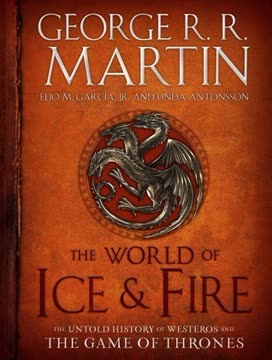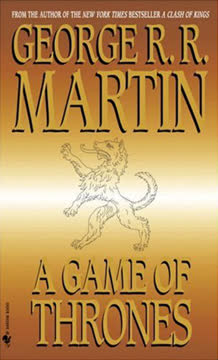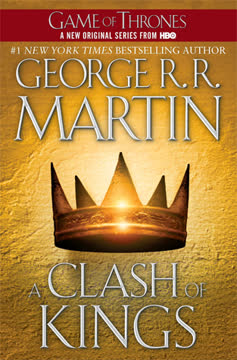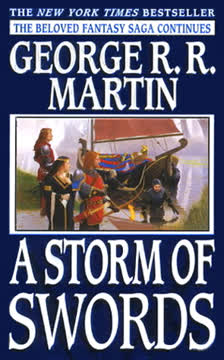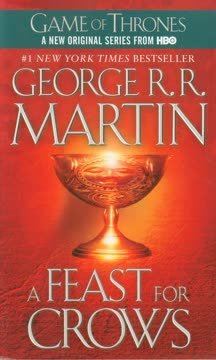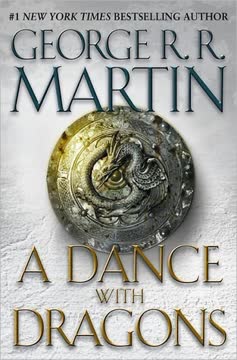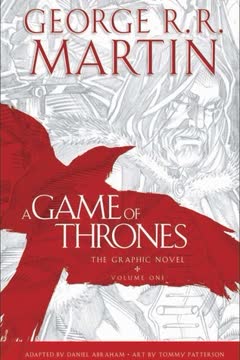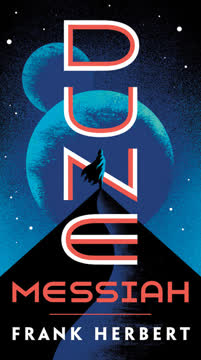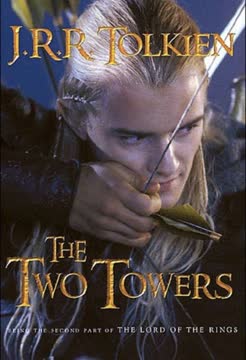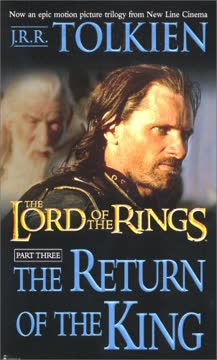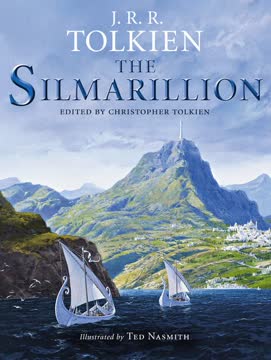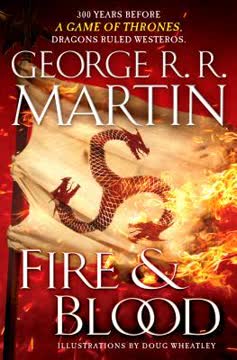Plot Summary
The Dawn of Westeros Unveiled
In the earliest days of Westeros, the land was a wild and untamed place, inhabited by the Children of the Forest and the Giants. These beings lived in harmony with nature, with the Children revered for their magic and the Giants known for their size and simplicity. This era, known as the Dawn Age, is shrouded in mystery due to the lack of written records. The tales passed down through generations speak of a world untouched by men, where the natural order reigned supreme, setting the stage for the complex history that would follow.
The First Men and Their Legacy
The arrival of the First Men marked a significant turning point in Westeros's history. Crossing from Essos, they brought bronze weapons and a new way of life, leading to conflict with the Children of the Forest. This clash eventually resulted in the Pact, a peace agreement allowing the First Men to settle open lands while the Children retained the deep forests. The First Men adopted the worship of the old gods, and their legacy is still felt in the customs and traditions of the North, where their descendants continue to honor ancient ways.
The Age of Heroes Emerges
Following the Pact, the Age of Heroes began, a time of legendary figures and the founding of great houses. Heroes like Brandon the Builder, Lann the Clever, and Garth Greenhand left their mark on history, establishing the foundations of the Seven Kingdoms. This era saw the rise of powerful families and the construction of iconic castles like Winterfell and Casterly Rock. The tales of these heroes, though often embellished, provide a glimpse into the early days of Westeros and the values that shaped its people.
The Long Night's Chilling Tale
The Long Night was a catastrophic event that plunged the world into darkness and cold for a generation. Legends speak of the Others, fearsome creatures from the far north, who brought death and despair. The Night's Watch was formed to defend against this threat, and the Wall was built to protect the realms of men. The Long Night ended with the Battle for the Dawn, where the First Men and the Children of the Forest united to drive back the Others. This event left a lasting impact on Westeros, shaping its history and the fears of its people.
Valyria's Rise and Fall
Across the sea, the Valyrians rose to power, mastering dragons and creating an empire that spanned continents. Their advanced civilization was built on the backs of slaves and fueled by the magic of dragons. The Valyrians' expansion brought them into conflict with the Ghiscari and later the Rhoynar, leading to a series of wars that solidified their dominance. However, their empire was ultimately destroyed in the Doom of Valyria, a cataclysmic event that shattered their civilization and left only ruins. The Targaryens, one of the few surviving Valyrian families, would later bring dragons to Westeros, forever changing its history.
The Andals' Arrival and Impact
The Andals, a warlike people from Essos, crossed the narrow sea and invaded Westeros, bringing with them the Faith of the Seven. Their arrival led to centuries of conflict with the First Men, as they sought to impose their religion and culture. The Andals' superior iron weapons and tactics allowed them to conquer much of the continent, establishing new kingdoms and displacing the old ways. Their influence is still seen in the southern regions of Westeros, where the Faith of the Seven remains the dominant religion, and their legacy continues to shape the political and cultural landscape.
Aegon V's Reforms and Resistance
King Aegon V, known for his love of the common people, sought to implement reforms that would grant them rights and protections previously unheard of. However, these changes were met with fierce opposition from the realm's lords, who saw their power and privileges threatened. Aegon's attempts to curtail the influence of the nobility led to accusations of tyranny, and his patience was tested as he faced defiance from those he sought to govern. Despite his good intentions, Aegon's inability to enforce his reforms without dragons left him frustrated and longing for the power his ancestors wielded.
The Targaryen Marriages Unraveled
Aegon V's plans to strengthen his rule through strategic marriages for his children were thwarted by their own desires. His eldest son, Duncan, abdicated his claim to the throne to marry Jenny of Oldstones, a commoner. Jaehaerys II and Shaera, Aegon's other children, defied their father's wishes by secretly marrying each other, following the Targaryen tradition of sibling unions. These acts of rebellion strained alliances with powerful houses and highlighted the challenges Aegon faced in controlling his own family, let alone the realm.
The Ninepenny Kings' Threat
In 258 AC, a group of outlaws and exiles, known as the Ninepenny Kings, formed an alliance to carve out kingdoms for themselves. Among them was Maelys the Monstrous, the last of the Blackfyre Pretenders, who aimed to claim the Iron Throne. The threat of the Ninepenny Kings loomed over Westeros, prompting King Aegon V to prepare for war. However, it was his son, Jaehaerys II, who would ultimately face the challenge, as the Ninepenny Kings launched their invasion shortly after Aegon's death.
Aerys II's Descent into Madness
Aerys II Targaryen ascended the Iron Throne with charm and ambition, but his reign soon descended into madness. His erratic behavior and paranoia alienated his allies and led to a series of disastrous decisions. Aerys's obsession with fire and his growing mistrust of those around him, including his own son, Rhaegar, set the stage for the eventual downfall of House Targaryen. The once-great dynasty was now teetering on the brink of collapse, as Aerys's madness threatened to consume the realm.
The Defiance of Duskendale
The Defiance of Duskendale was a pivotal event that revealed the fragility of Aerys II's rule. Lord Denys Darklyn's refusal to pay taxes and his subsequent capture of the king highlighted the growing discontent among the nobility. Aerys's captivity left him deeply scarred and paranoid, leading to increasingly tyrannical behavior. The daring rescue by Ser Barristan Selmy restored the king to power, but the incident marked a turning point in Aerys's reign, as his grip on sanity and the throne continued to weaken.
The Tragedy of Summerhall
In 259 AC, King Aegon V's obsession with reviving dragons culminated in the tragedy of Summerhall. As he gathered his family and closest advisors to celebrate the birth of his great-grandson, a catastrophic fire broke out, consuming the castle and claiming the lives of many, including Aegon himself. The details of the event remain shrouded in mystery, but the loss of life and the destruction of Summerhall marked the end of Aegon's dreams and left a lasting scar on House Targaryen.
Garth Greenhand's Fertile Legacy
Garth Greenhand, a legendary figure in Westeros, is credited with bringing fertility to the land and people. His mythical touch could make barren women fruitful, and his presence was said to ripen crops and trees. Many noble houses in the Reach claim descent from him, including the Gardener Kings, who ruled the region for thousands of years. Garth's legacy is a blend of myth and history, with tales of his numerous children founding great houses. While maesters and septons often dismiss these stories as fanciful, the smallfolk cherish them, seeing Garth as a symbol of prosperity and abundance.
The Gardener Kings' Reign
The Gardener Kings, descendants of Garth Greenhand, ruled the Reach from Highgarden, a seat of power marked by its living throne, the Oakenseat. Their reign was characterized by both war and peace, as they contended with the ironborn and other rivals. Notable kings like Garth VII, the Goldenhand, expanded their domain and secured peace through strategic marriages and alliances. However, their power waned over time, culminating in the destruction of Highgarden by the Dornish. The Gardener line ended with King Mern IX, who perished on the Field of Fire, leaving the Tyrells to rise in their place.
House Tyrell's Rise to Power
House Tyrell, originally stewards to the Gardener Kings, rose to prominence after the Targaryen conquest. When King Mern IX died without an heir, Aegon the Conqueror granted Highgarden to the Tyrells for their loyalty. Despite being seen as upstarts by older houses, the Tyrells proved capable rulers, maintaining peace and prosperity in the Reach. Their strategic marriages and alliances solidified their power, making them one of the most influential families in Westeros. The Tyrells' ascent is a testament to their adaptability and political acumen.
Characters
Maester Yandel
Maester Yandel serves as the narrator, compiling the history of Westeros from ancient times to the present. Raised in the Citadel, he is dedicated to preserving knowledge and understanding the complex tapestry of the continent's history. His work is a testament to the importance of learning and the pursuit of truth, as he seeks to provide a comprehensive account of the events and figures that have shaped Westeros.
The Children of the Forest
The Children of the Forest are an ancient race, deeply connected to the natural world and skilled in magic. They worship the old gods and are known for their ability to carve faces into weirwood trees. Their conflict with the First Men and eventual peace through the Pact highlight their role as protectors of the land. Though their presence has diminished, their influence is still felt in the traditions and beliefs of the North.
The First Men
The First Men were the first humans to settle in Westeros, bringing with them new technologies and ways of life. Their arrival led to significant changes in the landscape and culture of the continent. The First Men's legacy is evident in the customs and traditions of the North, where their descendants continue to honor the old gods and the ancient ways.
The Others
The Others, also known as the White Walkers, are mysterious and deadly creatures from the far north. Their appearance during the Long Night brought terror and destruction, threatening all life in Westeros. The formation of the Night's Watch and the construction of the Wall were direct responses to this threat, and the fear of their return continues to haunt the people of Westeros.
The Valyrians
The Valyrians were a powerful civilization known for their mastery of dragons and advanced magic. Their empire, built on conquest and slavery, dominated much of Essos before its sudden destruction in the Doom of Valyria. The Targaryens, one of the few surviving Valyrian families, would later bring dragons to Westeros, leaving a lasting impact on its history and politics.
The Andals
The Andals were a warlike people who invaded Westeros, bringing with them the Faith of the Seven. Their arrival led to centuries of conflict with the First Men and the eventual establishment of new kingdoms. The Andals' influence is still seen in the southern regions of Westeros, where their religion and culture continue to shape the political and social landscape.
Aegon V Targaryen
Aegon V, known as "Egg," was a well-meaning king who sought to improve the lives of the common people through progressive reforms. However, his efforts were met with resistance from the nobility, who viewed him as a threat to their power. Aegon's reign was marked by frustration and unfulfilled dreams, as he longed for the dragons of old to enforce his will. His inability to control his own family and the realm ultimately led to his tragic end at Summerhall.
Duncan Targaryen
Duncan, Aegon V's eldest son, chose love over duty by abdicating his claim to the throne to marry Jenny of Oldstones, a commoner. His decision strained alliances with powerful houses and highlighted the challenges Aegon faced in maintaining control over his family. Duncan's actions set a precedent for his siblings, who also defied their father's wishes in matters of marriage.
Jaehaerys II Targaryen
Jaehaerys II ascended the Iron Throne after the death of his father, Aegon V. His reign was marked by the threat of the Ninepenny Kings, which he successfully quelled with the help of his lords. However, Jaehaerys's health was frail, and his reign was short-lived. Despite his brief time on the throne, he managed to stabilize the realm and prepare it for the challenges that lay ahead.
Aerys II Targaryen
Aerys II, known as the Mad King, began his reign with charm and ambition but quickly descended into madness. His erratic behavior and paranoia alienated his allies and led to a series of disastrous decisions. Aerys's obsession with fire and his growing mistrust of those around him, including his own son, Rhaegar, set the stage for the eventual downfall of House Targaryen.
Rhaegar Targaryen
Rhaegar, the son of Aerys II, was a charismatic and talented prince who found himself caught in the turmoil of his father's reign. Despite his best efforts to maintain stability, Rhaegar's actions, including his controversial relationship with Lyanna Stark, contributed to the tensions that would eventually lead to Robert's Rebellion and the fall of House Targaryen.
Plot Devices
The Pact
The Pact was a peace agreement between the First Men and the Children of the Forest, allowing the First Men to settle the open lands while the Children retained the deep forests. This agreement marked the end of hostilities and the beginning of a new era in Westeros, where the two peoples coexisted and shared their knowledge and traditions.
The Long Night
The Long Night was a devastating event that plunged the world into darkness and cold for a generation. The tales of the Others and the Battle for the Dawn highlight the themes of unity and survival in the face of overwhelming odds. The Long Night's impact on Westeros is still felt, as the fear of its return looms over the continent.
The Doom of Valyria
The Doom of Valyria was a cataclysmic event that destroyed the Valyrian Empire, leaving only ruins and a few surviving families. This event serves as a reminder of the fragility of power and the dangers of overreaching ambition. The Targaryens' survival and subsequent rise to power in Westeros are direct consequences of this disaster, shaping the continent's history for generations.
The Ninepenny Kings
The Ninepenny Kings were a group of outlaws and exiles who formed an alliance to carve out kingdoms for themselves. Their invasion of Westeros posed a significant threat to the realm, prompting King Aegon V and later Jaehaerys II to prepare for war. The Ninepenny Kings' defeat marked a turning point in the Targaryen dynasty's history, as it solidified Jaehaerys's rule and temporarily stabilized the realm.
The Defiance of Duskendale
The Defiance of Duskendale was a pivotal event that revealed the fragility of Aerys II's rule. Lord Denys Darklyn's capture of the king highlighted the growing discontent among the nobility and left Aerys deeply scarred and paranoid. The daring rescue by Ser Barristan Selmy restored the king to power, but the incident marked a turning point in Aerys's reign, as his grip on sanity and the throne continued to weaken.
The Tragedy of Summerhall
The tragedy of Summerhall was a catastrophic event that marked the end of King Aegon V's dreams of reviving dragons. The fire that consumed the castle and claimed many lives, including Aegon's, left a lasting scar on House Targaryen. The details of the event remain shrouded in mystery, but its impact on the Targaryen dynasty was profound, as it marked the end of an era and set the stage for the challenges that lay ahead.
Analysis
"The World of Ice & Fire" offers a rich tapestry of history, myth, and legend, exploring the intricate web of power, legacy, and ambition that defines Westeros. Through its detailed accounts of ancient civilizations, legendary figures, and pivotal events, the book delves into the themes of power's fragility, the cyclical nature of history, and the enduring influence of myth and tradition. The narrative underscores the idea that history is shaped by both grand events and the personal choices of individuals, highlighting the complex interplay between destiny and free will. As readers journey through the ages, they are reminded of the timeless lessons of unity, resilience, and the consequences of unchecked ambition, offering a deeper understanding of the world that serves as the backdrop for the epic saga of "Game of Thrones."
Last updated:
FAQ
0. Synopsis & Basic Details
What is The World of Ice & Fire: The Untold History of Westeros and the Game of Thrones about?
- Comprehensive Historical Compendium: The World of Ice & Fire is a meticulously compiled historical account of the known world, primarily focusing on Westeros, from its mythical Dawn Age through the Targaryen dynasty and up to the early reign of Robert Baratheon. It details the rise and fall of ancient civilizations, the formation of the Seven Kingdoms, and the intricate lineages of its noble houses.
- In-Universe Scholarly Narrative: Presented as a work by Maester Yandel of the Citadel, the book offers an in-universe perspective, complete with scholarly debates, conflicting accounts, and the maesters' attempts to separate fact from legend. This narrative choice immerses the reader in the world's lore as if they are reading a genuine historical text from Westeros.
- Foundation for the Saga: Beyond mere history, it provides crucial background and context for the events and characters of George R.R. Martin's A Song of Ice and Fire series, exploring the deep roots of conflicts, cultural differences, and prophecies that shape the ongoing narrative.
Why should I read The World of Ice & Fire: The Untold History of Westeros and the Game of Thrones?
- Deepen World Immersion: For fans of A Song of Ice and Fire, this book offers unparalleled depth, enriching understanding of the political landscape, ancient feuds, and cultural nuances that drive the main series. It transforms casual knowledge into profound insight, making the fictional world feel more real and lived-in.
- Uncover Hidden Lore: It's a treasure trove of lore, detailing forgotten heroes, lost civilizations like Valyria and Old Ghis, and the origins of magic and mythical creatures, providing answers to many questions left open in the main novels and TV show.
- Appreciate Narrative Complexity: The book showcases Martin's masterful world-building, revealing the intricate layers of history, conflicting perspectives, and the cyclical nature of power and conflict, which are central themes in his storytelling.
What is the background of The World of Ice & Fire: The Untold History of Westeros and the Game of Thrones?
- Mythological and Pre-Human Eras: The book begins with the Dawn Age, a time dominated by the Children of the Forest and Giants, establishing a deep mythological foundation for Westeros before human arrival. This includes the creation of weirwoods and early magical practices.
- Successive Waves of Migration and Conquest: It chronicles the major migratory periods, from the First Men crossing the Broken Arm of Dorne, through the Andal invasion bringing the Faith of the Seven, to the Rhoynar's flight to Dorne, each fundamentally reshaping the continent's demographics, culture, and political structure.
- Targaryen Dynasty's Rise and Fall: A significant portion is dedicated to the Targaryen kings, from Aegon the Conqueror's unification of the Seven Kingdoms with dragons, through the internal strife of the Dance of the Dragons, the Blackfyre Rebellions, and ultimately to Aerys II's madness and Robert's Rebellion, providing a detailed political and social history of their 300-year rule.
What are the most memorable quotes in The World of Ice & Fire: The Untold History of Westeros and the Game of Thrones?
- "Stone does not burn.": Uttered by Harren the Black to Aegon the Conqueror, this defiant boast before the burning of Harrenhal (document 1, page 30) encapsulates the hubris of kings who believe their fortifications are impregnable against overwhelming power, a theme echoed throughout Westeros's history.
- "Your words. Ours are Unbowed, Unbent, Unbroken. You may burn us, my lady … but you will not bend us, break us, or make us bow. This is Dorne. You are not wanted here. Return at your peril.": Princess Meria Martell's iconic declaration to Rhaenys Targaryen (document 1, page 34) perfectly captures the fierce independence and unyielding spirit of Dorne, explaining why it remained unconquered for so long.
- "The Iron Bank will have its due.": This chilling adage (document 1, page 172) regarding the Iron Bank of Braavos highlights its immense, subtle power and influence over the world's rulers, suggesting that even kings are beholden to financial forces, a theme that resonates deeply with the political machinations in the main series.
What writing style, narrative choices, and literary techniques does George R.R. Martin use?
- In-Universe Scholarly Tone: Martin adopts the persona of Maester Yandel, creating a formal, academic tone filled with citations, conflicting historical accounts, and speculative theories, which lends authenticity and depth to the fictional history. This narrative choice allows for multiple interpretations and highlights the subjective nature of historical record-keeping.
- Epistolary and Archival Integration: The text frequently references "letters from the Citadel," "fragments of Barth's Unnatural History," and "Maester Munkun's True Telling," embedding the narrative within a rich tapestry of fictional primary sources. This technique reinforces the illusion of a real, extensively documented world and encourages readers to question the reliability of historical accounts.
- Foreshadowing and Thematic Echoes: Despite being a historical text, the book is replete with subtle foreshadowing for events in A Song of Ice and Fire, such as the recurring motif of "fire and blood" and the cyclical nature of power struggles. It also uses thematic echoes, like the repeated failures of kings to unite Dorne by force, to underscore broader lessons about governance and human nature.
1. Hidden Details & Subtle Connections
What are some minor details that add significant meaning?
- The Children's Speech and Weirwood Connection: The description of the Children of the Forest's speech sounding "like the song of stones in a brook, or the wind through leaves, or the rain upon the water" (document 1, page 10) subtly links their communication directly to nature, reinforcing their deep connection to the old gods and the environment. This detail hints at a form of communication far more ancient and elemental than human language, suggesting a deeper, almost symbiotic relationship with their world.
- Valyrian Steel's Magical Properties: Beyond its folding and impurities removal, Valyrian steel is noted to use "spells—or at least arts we do not know—to give unnatural strength" (document 1, page 17). This seemingly minor detail elevates Valyrian steel beyond mere craftsmanship, implying a magical component that is now lost, which explains its unparalleled quality and scarcity in the current timeline of A Song of Ice and Fire, and fuels the desire for its recovery or recreation.
- The Titan of Braavos's Dual Purpose: The Titan of Braavos is described not just as a colossal statue, but as a fortress with "murder holes and arrow slits" (document 1, page 171) and the ability to steer enemy ships onto rocks. This detail reveals that the Titan is not merely a symbolic guardian but an active, formidable defensive weapon, underscoring Braavos's commitment to its freedom and its pragmatic approach to defense, contrasting with the more traditional castles of Westeros.
What are some subtle foreshadowing and callbacks?
- Maegor's Holdfast and Secret Passages: Maegor I's obsession with secret tunnels and passages within the Red Keep (document 1, page 45) foreshadows later events in A Song of Ice and Fire where these very passages are used for intrigue, escape, and murder. This detail highlights how the architectural choices of past rulers continue to influence future events, creating a physical manifestation of historical consequences.
- The "Dragonseed" of Dragonstone: The mention of "many on Dragonstone who could rightly claim—or at least suspect—that some Targaryen blood ran in their veins" (document 1, page 53) subtly foreshadows the emergence of various "dragonseeds" during the Dance of the Dragons, individuals of questionable parentage who attempt to claim dragons. This detail explains the pool of potential dragonriders beyond the immediate royal family and the chaos that ensues when such claims are made.
- The Iron Bank's Influence on Succession: The Iron Bank's reputation for "toppl[ing] lords and princes" and sending "assassins against those it cannot remove" (document 1, page 172) serves as a chilling foreshadowing of its potential role in the political landscape of Westeros, particularly in supporting or undermining claimants to the Iron Throne. This detail elevates the bank from a mere financial institution to a powerful, shadowy player in the game of thrones, whose influence extends far beyond mere coin.
What are some unexpected character connections?
- Orys Baratheon's Alleged Targaryen Lineage: The persistent rumor that Orys Baratheon was Aegon the Conqueror's "bastard half brother" (document 1, page 144) provides an unexpected, yet significant, connection between the founding houses of the Targaryen and Baratheon dynasties. This detail, though unproven, adds a layer of complexity to the Baratheon claim to the throne and their historical loyalty (and later rebellion) against the Targaryens, suggesting a deeper, familial root to their power.
- Lann the Clever's Possible Casterly Retainer Status: Archmaester Perestan's theory that Lann the Clever was a "retainer of some sort in service to Lord Casterly" who "impregnated his lordship's daughter" (document 1, page 125) offers a surprising, less mythical origin for House Lannister's acquisition of Casterly Rock. This interpretation shifts Lann from a purely legendary trickster to a cunning opportunist, highlighting the often-unromantic and pragmatic origins of noble power.
- The Blackwoods' and Brackens' Shared Ancestry with Benedict Justman: The revelation that Benedict Rivers, who became Benedict the Justman, was a "bastard born of a tryst between two ancient enemies, the Blackwoods and the Brackens" (document 1, page 110), creates an unexpected, unifying origin for a powerful river king from two houses infamous for their ceaseless feud. This detail underscores the cyclical nature of conflict and reconciliation, and the surprising ways in which even the bitterest enemies can be intertwined by blood.
Who are the most significant supporting characters?
- Maester Yandel: As the in-universe author, Yandel's perspective shapes the entire narrative, offering a scholarly, often skeptical, lens through which history is presented. His personal journey from foundling to maester (document 1, page 6) subtly influences his dedication to knowledge and his desire to create a comprehensive, accessible history for the common man, making him a crucial, albeit unseen, character.
- Septon Barth: Despite his works being "considered disreputable" and "burned" (document 1, pages 11, 67), Septon Barth's "Unnatural History" is frequently cited as a source of controversial but often insightful theories, particularly regarding dragons, Valyrian magic, and the seasons. His character represents the tension between established dogma and speculative, often magical, knowledge within the Citadel.
- Archmaester Gyldayn: Gyldayn's "fragmentary treatise" and "lost masterwork" (document 1, page 26) are presented as highly valued, authoritative sources, especially for the Targaryen reigns. His writings offer a more direct, less filtered account of events compared to Yandel's compilation, suggesting a deeper, more intimate knowledge of the royal family and their dragons, making him a pivotal, if posthumous, historical voice.
2. Psychological, Emotional, & Relational Analysis
What are some unspoken motivations of the characters?
- Aegon the Conqueror's Strategic Pragmatism: While presented as a visionary unifier, Aegon's decision to conquer Westeros after the Doom of Valyria (document 1, page 26) can be interpreted as a pragmatic move to secure his house's survival and prevent its decline into irrelevance. His "interest in Westeros long predated the events that drove him to war" (document 1, page 27), suggesting a calculated ambition rather than purely reactive conquest, driven by the need to establish a new power base for the last dragonlords.
- Visenya Targaryen's Desire for Control: Visenya's stern, unforgiving nature and her alleged dabbling in "dark sorceries" (document 1, page 28) hint at a deep-seated desire for control and power, perhaps stemming from the precariousness of her Valyrian heritage after the Doom. Her insistence on selecting the Kingsguard for "unwavering loyalty" over martial skill (document 1, page 37) and her suspected role in Aenys's death (document 1, page 41) suggest a ruthless pragmatism aimed at securing the Targaryen dynasty through her preferred heir, Maegor.
- Tywin Lannister's Quest for Respect and Legacy: Tywin's relentless drive for power and his "humorless, unforgiving, unbending, proud, and cruel" (document 1, page 82) demeanor are deeply rooted in his contempt for his weak father, Lord Tytos, and the shame he brought upon House Lannister. His actions, from extinguishing the Reynes and Tarbecks to his strained relationship with Aerys II, are driven by an unspoken, fierce determination to restore and elevate his family's honor and ensure a legacy of strength, rather than mere personal gain.
What psychological complexities do the characters exhibit?
- Aenys I's Approval-Seeking Indecisiveness: Aenys I, described as a "dreamer, a dabbler in alchemy, a patron of singers and mummers and mimes" (document 1, page 39), exhibits a profound psychological complexity rooted in his "hunger for approval." This led him to "dither and hesitate over his decisions for fear of disappointing one side or another," ultimately contributing to his downfall. His perceived weakness, contrasted with his warrior father and brother, highlights the psychological burden of inheriting a legacy of strength without possessing the same temperament.
- Maegor I's Sadistic Insecurity: Maegor the Cruel's reign is characterized by extreme violence, a craving for "death and absolute mastery" (document 1, page 42), and a desperate, ultimately fruitless, pursuit of an heir. His monstrous offspring and subsequent descent into madness suggest a deep-seated insecurity and psychological torment, possibly exacerbated by his mother Visenya's influence and the pressure to prove himself worthy of the throne, leading to a cycle of cruelty and self-destruction.
- Aegon V's Idealism vs. Reality: Aegon V, "the Unlikely," is portrayed as a king whose "good-hearted" nature and "concern for the welfare of the poor and weak" (document 1, page 78) clashed with the harsh realities of governance and the entrenched power of the nobility. His frustration at being unable to enact reforms without dragons reveals a profound psychological struggle between his idealistic vision for the realm and the practical limitations of his power, culminating in his tragic, dragon-obsessed end at Summerhall.
What are the major emotional turning points?
- The Doom of Valyria's Existential Shock: The sudden, cataclysmic destruction of Valyria (document 1, page 24) serves as a massive emotional turning point for the surviving Targaryens, particularly Aenar and Daenys. It instills in them a profound sense of loss, but also a fierce determination to preserve their lineage and dragons, shaping their cautious approach to Westeros for a century and influencing Aegon's eventual conquest.
- Rhaenys's Death in Dorne and the Dragon's Wroth: The death of Queen Rhaenys and her dragon Meraxes at Hellholt (document 1, page 155) is a deeply emotional turning point for Aegon the Conqueror, plunging him and Visenya into "the Dragon's Wroth." This period of vengeful destruction reveals the raw grief and fury beneath Aegon's usually pragmatic exterior, demonstrating the personal cost of the Dornish resistance and the depth of his bond with his sister-wife.
- Tywin Lannister's Humiliation and Resignation: The repeated public humiliations inflicted by Aerys II, culminating in the king's crude remarks about Joanna Lannister and Jaime's forced Kingsguard appointment (document 1, page 84), mark a critical emotional breaking point for Tywin. His silent endurance followed by his resignation as Hand signifies the complete severing of his loyalty and affection for Aerys, transforming him into a formidable, vengeful force that would ultimately lead to the Mad King's downfall.
How do relationship dynamics evolve?
- Targaryen Sibling Marriages: Duty vs. Desire: The relationship dynamics within the early Targaryen family, particularly Aegon's marriages to Visenya and Rhaenys, illustrate a complex interplay of duty and desire. While Aegon wed Visenya "out of duty" and Rhaenys "out of desire" (document 1, page 27), this dynamic evolved into a functional, albeit sometimes distant, partnership in governance and conquest. This foundational relationship sets a precedent for later Targaryen incestuous unions, often with varying degrees of success and personal happiness.
- Aerys II and Tywin Lannister: Friendship to Bitter Enmity: The relationship between Aerys II and Tywin Lannister undergoes a dramatic transformation from childhood friendship and effective partnership to bitter, destructive enmity. Initially, Tywin's competence as Hand allowed Aerys to indulge his whims, but as Aerys's madness deepened, his "compassion turned to suspicion" (document 1, page 83), leading to public humiliations and the eventual, resentful resignation of Tywin. This evolution highlights how power and paranoia can corrupt even the strongest bonds.
- Jaehaerys I and Alysanne: A Partnership of Equals: The marriage of Jaehaerys I and Alysanne is depicted as a rare example of a truly harmonious and influential partnership, where "she ruled the realm as much as the king did" (document 1, page 46). Their relationship evolved from a loving union to a collaborative rule, with Alysanne advocating for social reforms and even causing "estrangements" when her counsel was disregarded. This dynamic showcases a progressive model of royal partnership, contrasting sharply with the more patriarchal norms of Westeros.
4. Interpretation & Debate
Which parts of the story remain ambiguous or open-ended?
- The True Cause of the Doom of Valyria: The book presents multiple theories for the Doom, from a "natural cataclysm" to "spells to tame the Fourteen Flames" faltering, or even "the curse of Garin the Great" (document 1, page 24). This ambiguity leaves the ultimate cause open to interpretation, highlighting the limitations of historical knowledge and the role of myth and superstition in explaining catastrophic events.
- The Identity of the Knight of the Laughing Tree: The mystery knight at the Harrenhal tourney, whose identity is never definitively revealed (document 1, page 86), remains a significant open-ended element. While King Aerys suspected Jaime Lannister, and popular theories often point to Lyanna Stark, the narrative deliberately withholds a definitive answer, allowing readers to speculate on its true meaning and its role in the unfolding rebellion.
- The Contents of Prince Nymor's Letter to Aegon I: The private letter from Prince Nymor of Dorne that convinced Aegon I to make peace (document 1, page 156) is never revealed, leading to enduring speculation about its contents. Theories range from threats of assassination by Faceless Men to revelations about Rhaenys's survival, leaving the true reason for Aegon's sudden change of heart a tantalizing mystery and a subject of historical debate.
What are some debatable, controversial scenes or moments in The World of Ice & Fire: The Untold History of Westeros and the Game of Thrones?
- Visenya's Role in Aenys I's Death: The suggestion that Dowager Queen Visenya might have poisoned King Aenys I (document 1, page 41) to clear the path for her son Maegor is a highly controversial moment. While unproven, the narrative raises questions about her ruthless ambition and the lengths she would go to secure her preferred succession, challenging the traditional portrayal of royal grief and loyalty.
- The Paternity of Rhaenyra's Sons: The persistent rumors and King Viserys I's decree regarding the "paternity of Rhaenyra's children" (document 1, page 52), particularly their brown hair and pug noses despite their Valyrian parents, is a major point of contention. This debate over legitimacy fuels the Dance of the Dragons, highlighting the societal importance of bloodlines and the devastating consequences of perceived infidelity in a royal succession.
- The "Sacrifice" of the Harrenhal Craftsmen: Maegor I's command to "put to the sword" all the masons and craftsmen who built the Red Keep (document 1, page 45) to keep its secrets is a horrifying and controversial act. This moment showcases Maegor's extreme paranoia and cruelty, sparking debate about the ethics of power and the ultimate cost of absolute control, leaving a dark stain on the castle's history.
The World of Ice & Fire: The Untold History of Westeros and the Game of Thrones Ending Explained: How It Ends & What It Means
- A Cycle of Conflict and Fragile Peace: The book concludes with the early reign of King Robert I Baratheon, following Robert's Rebellion and the end of Targaryen rule (document 1, page 89). This "ending" is not a definitive resolution but rather a snapshot in a continuous cycle of conflict, rebellion, and the establishment of new, often temporary, periods of peace. It underscores the central theme that power is constantly shifting, and no dynasty's rule is truly eternal.
- The Illusion of a "Glorious Reign": Maester Yandel's closing remarks about Robert's "glorious reign" and the "peace and prosperity" (document 1, page 89) he brought are heavily ironic, given the reader's knowledge of the events in A Song of Ice and Fire. This narrative choice highlights the subjective nature of historical accounts and the tendency of chroniclers to flatter current rulers, even as it subtly foreshadows the instability and hidden tensions that will soon erupt.
- Uncertainty of the Future, Lessons from the Past: The afterword explicitly states, "No man can say with certainty what the future may hold. But perhaps, in knowing what has already transpired, we can all do our part to avoid the mistakes of our forebears" (document 1, page 89). This concluding thought emphasizes the book's purpose: to provide historical context not as a fixed destiny, but as a guide for understanding the present and potentially influencing the future, leaving the ultimate meaning of Westeros's history open to ongoing interpretation and the unfolding narrative of the main series.
Review Summary
The World of Ice & Fire receives generally positive reviews, praised for its detailed world-building, stunning artwork, and comprehensive history of Westeros. Fans appreciate the depth of information provided, though some find parts dry or overly complex. Many reviewers note it's best suited for hardcore fans of the series. The book is commended for its in-universe narrative style and ability to create new theories while answering existing questions. Some criticize it as a distraction from completing the main series, but most find it a valuable addition to Martin's fantasy world.
A Song of Ice and Fire Series Series
Similar Books
Download PDF
Download EPUB
.epub digital book format is ideal for reading ebooks on phones, tablets, and e-readers.
